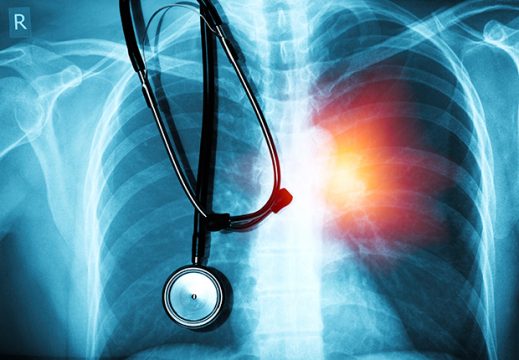Pulmonary vessels are densely innervated by sympathetic, parasympathetic, and sensitive fibers.

According to the World Health Organization (WHO) pulmonary arterial hypertension (PAH) grade 1 consists of obliterating pulmonary vascular remodeling accompanied by a diminished generation of vessel dilators.
Its pharmacological treatment has certain limitations and sympathetic pulmonary vascular denervation might be a valid treatment alternative, seeing as it has shown promising results.
128 patients with pulmonary hypertension grade 1 were randomized. Right cardiac catheterization was used to measure mean pulmonary pressure (≥25 mmHg), pulmonary vascular resistance (>3 U WOOD) and Wedge pressure (<15 mmHg) and negative vascular reactivity test. After this procedure, 63 patients received pulmonary denervation (PADN) plus optimal medical treatment and the remaining 65 simulated renal denervation (SHAM procedure) plus optical medical treatment.
Read also: How Do We Manage Antiaggregation in BARC I Bleeding after AMI?
Mean age was 40, they were mostly women, the most frequent cause was idiopathic, all patients were symptomatic and over 90% were in the low functional class. The 6-minute walk test was close to 400 meters and NT-proBNP was elevated, with no difference between the groups. Neither were there differences in treatment 30 days prior procedure.
Mean pressure of the pulmonary artery was 53.9 mmHg and pulmonary vascular resistance was 10.9 U WOOD.
There were no complications during PADN or during the sham procedure. They all got optimal medical treatment at maximal doses with sildenafil or tadalafil.
At 6-month followup, even though both groups improved the 6 minute test walk, this resulted higher in patients receiving PADN vs the sham group, 50,9 vs 33,8 mts p=<0,00, as well as higher reduction of pulmonary vascular resistance-3 U WOOD vs. -1,9 U WOOD (adjusted difference 1.4; 95% CI: 2.6 to 0.2).
Read also: Mitral Trial: 2-Year Followup.
Also, PADN showed improved right ventricular function, lower tricuspid regurgitation and reduced NT-proBNP, as well as improved functional class and less clinical worsening.
Conclusion
In patients with pulmonary hypertension grade 1 according to WHO, pulmonary denervation improves exercise capacity, hemodynamic state and clinical evolution at 6 months.

Dr. Carlos Fava.
Member of the editorial board of SOLACI.org.
Original Title: Pulmonary Artery Denervation for Pulmonary Arterial Hypertension A Sham-Controlled Randomized PADN-CFDA Trial.
Reference: Hang Zhan, et al. J Am Coll Cardiol Intv 2022;15:2412–2423.
Subscribe to our weekly newsletter
Get the latest scientific articles on interventional cardiology





